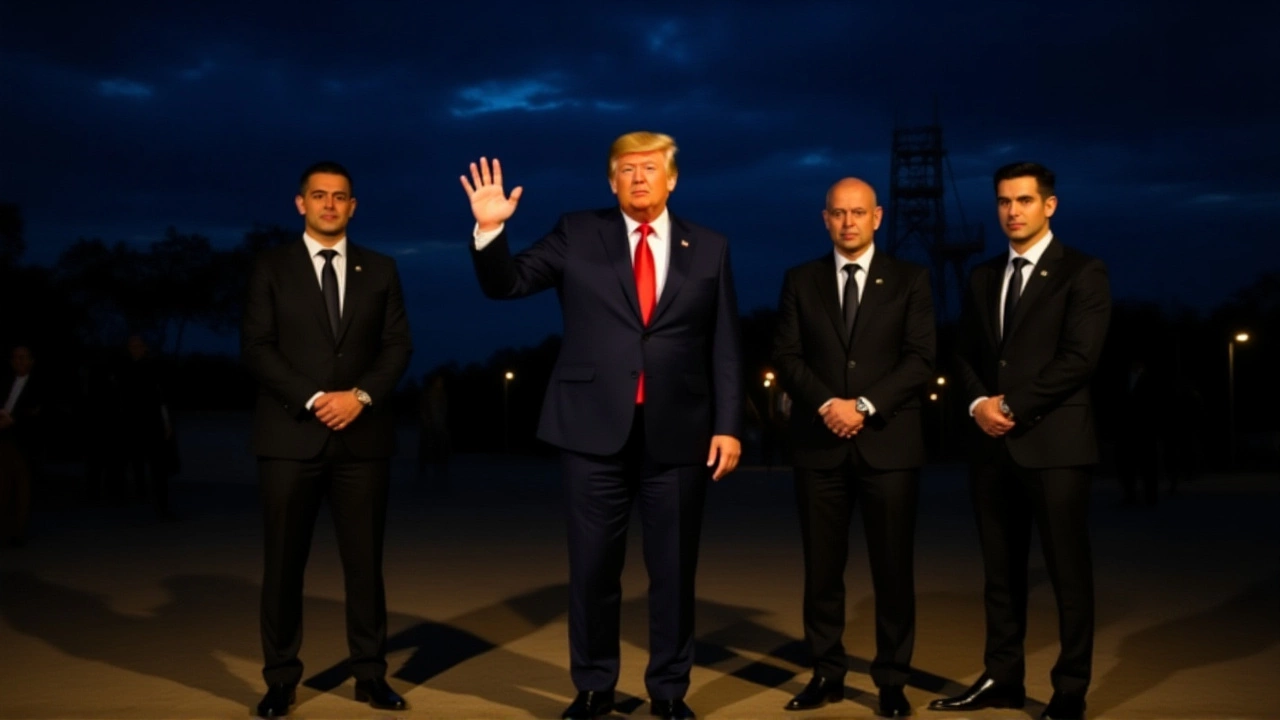When Panama national football team kicked off against El Salvador national football team on November 19, 2025, at Estadio Rommel Fernández Gutiérrez in Panama City, no one knew for sure if it would be a celebration or a heartbreak. By the final whistle, the roar of 28,000 fans told the story: Panama had done it. A 3-0 victory — goals from César Blackman, Éric Davis, and José Luis Rodríguez — wasn’t just a win. It was a passport to the 2026 FIFA World Cup. And it came down to the wire, with goal difference hanging in the balance. Panama finished level on points with Suriname, but this result, this night, changed everything.
One Match, One Destiny
It was the final game of Group A in the CONCACAF Third Round, and Panama entered needing a win to guarantee qualification. A draw wouldn’t cut it. Suriname, their closest rival, had a better goal difference (+5 to Panama’s +2) and had already finished their campaign with a 1-1 draw against Guatemala. So Panama didn’t just need to win — they needed to win big. And they did.
César Blackman opened the scoring in the 17th minute with a crisp finish after a quick counterattack, sending the home crowd into a frenzy. The energy didn’t fade. Instead, it grew. By halftime, Éric Davis converted a penalty in the 45th minute plus four seconds — a moment that felt like destiny knocking. The penalty came after a handball in the box by El Salvador’s defender N. Blanco, who had been one of his team’s few bright spots all campaign. Then, in the 85th minute, substitute José Luis Rodríguez sealed it with a low drive from the edge of the box. Three goals. No response from El Salvador. The final whistle didn’t just end the match — it ended a decade-long wait.
A Drought Finally Over
Panama last played in a World Cup in 2018. Before that, it was 2010. And before that? 1990. For a nation of just 4.3 million people, football isn’t just a sport — it’s identity. When they missed out on 2022 after losing to Costa Rica in the playoff, the disappointment was raw. Fans cried in the streets. Coaches were fired. Youth programs were restructured. This time, they didn’t just qualify — they did it with grit. Two wins, three draws, zero losses. No team in the group was more consistent.
“We didn’t have the flashy names,” said coach Ernesto “Chepo” de la Torre after the match, his voice cracking. “But we had heart. And heart wins tournaments.”
Suriname, despite finishing with the same 9 points, couldn’t overcome their goal difference. They had drawn three times — including a 0-0 with Panama in the second leg of the qualifiers — and their offense stalled in crucial moments. Panama’s defense, anchored by veteran Román Torres, conceded just two goals in five games. That’s elite.
Who Made It Happen?
Behind the goals were the unsung heroes. Forward J. Fajardo, who played in all seven qualifying matches and scored three goals, was the engine of Panama’s attack. Midfielder R. Tejada provided the glue — five appearances, one assist, relentless work rate. On the other side, El Salvador’s N. Ordaz led his team with three assists, but even his creativity couldn’t break through Panama’s disciplined backline.
Defender N. Blanco of El Salvador, who had two appearances and one assist, was the only player on either side to feature in both the 2021 and 2025 qualifying cycles. He’s seen the rise and fall of his team’s fortunes. “We’re not done,” he said post-match. “This hurts. But it’s not the end.”
How the World Watched
The match was broadcast across more than 70 countries. In the U.S., NBC Sports, ESPN, and Paramount+ drew record streaming numbers for a CONCACAF qualifier. In the U.K., Sky Sports and DAZN reported a 40% spike in viewership compared to previous qualifiers. CBS Sports Golazo America released an 11-minute 13-second highlight package that quickly hit 2.1 million views on YouTube — the title? “WORLD CUP DROUGHT ENDED!”
Even in Panama’s diaspora — from New Jersey to Madrid to Toronto — bars were packed. A fan in Toronto told APWin reporter Gustavo, who’s covered Panamanian football since 2016: “My dad was born here. He never saw us qualify. Now my son did. That’s legacy.”

What’s Next?
Panama will be placed in one of the eight pots for the World Cup draw in December. They’re likely to face a strong European or South American side — possibly Spain, Germany, or Brazil. But don’t count them out. They’ve already beaten the odds once. Their group stage opponents in 2026 will remember this team: not the flashiest, not the most expensive, but the most relentless.
El Salvador? They’ll regroup. Their youth academy, long neglected, is now getting funding. A new coach is expected to be named by January. The dream isn’t dead — just delayed.
History Between the Teams
The rivalry between Panama and El Salvador is one of the most physical in CONCACAF. Their last five meetings: El Salvador won 1-0 in 2021, Panama responded with a 2-1 win weeks later. A 2-2 draw in the 2023 Gold Cup. Then, on October 11, 2025, Panama won 1-0 in San Salvador — a result that set the stage for this final showdown. And before that? A 0-0 stalemate in 2016. This match wasn’t just about points. It was about pride.
Frequently Asked Questions
How did Panama qualify despite having a worse goal difference than Suriname?
CONCACAF’s tiebreaker rules prioritize head-to-head results over goal difference when teams are level on points. Panama beat El Salvador 3-0, while Suriname only drew 1-1 with Panama in their direct encounter. That victory gave Panama the edge, even though Suriname had a +5 goal difference to Panama’s +2. The win over El Salvador was the decider.
Who scored the goals for Panama in the decisive match?
César Blackman opened the scoring in the 17th minute, Éric Davis converted a penalty in stoppage time of the first half (45'+4), and substitute José Luis Rodríguez sealed the 3-0 win with a low strike in the 85th minute. All three goals came from different phases of play — a sign of Panama’s tactical discipline and depth.
What was Panama’s record in the 2026 World Cup qualifiers?
Panama finished the group stage with 2 wins, 3 draws, and 0 losses — a perfect unbeaten record. They scored 7 goals and conceded just 2. Their consistency was unmatched in Group A, and their ability to grind out draws on the road — including in Guatemala and Suriname — proved crucial.
Who were Panama’s key players in the qualifying campaign?
Forward J. Fajardo led the team with 3 goals across 7 appearances, while midfielder R. Tejada provided crucial support with 1 assist in 5 games. Veteran defender Román Torres anchored a defense that conceded only two goals in five matches. Goalkeeper Jaime Penedo, though not always starting, brought experience and leadership that steadied the team under pressure.
How did El Salvador perform in the qualifiers?
El Salvador finished last in Group A with just 3 points from one win and four losses. Their only victory came against Guatemala 2-1 in October 2025. Forward N. Ordaz led the team with 3 assists, but their attack struggled to convert chances, and their defense conceded 12 goals — the worst in the group. They’ll now focus on rebuilding ahead of the 2027 Gold Cup.
What does this mean for Panamanian football moving forward?
Qualifying for the World Cup unlocks major funding, youth development grants, and international exposure. The national federation has already pledged to invest in grassroots academies in rural provinces. Fans are demanding better infrastructure. And with a generation of players now experienced in high-stakes matches, Panama could become a regular fixture in future World Cups — not just a surprise qualifier.

